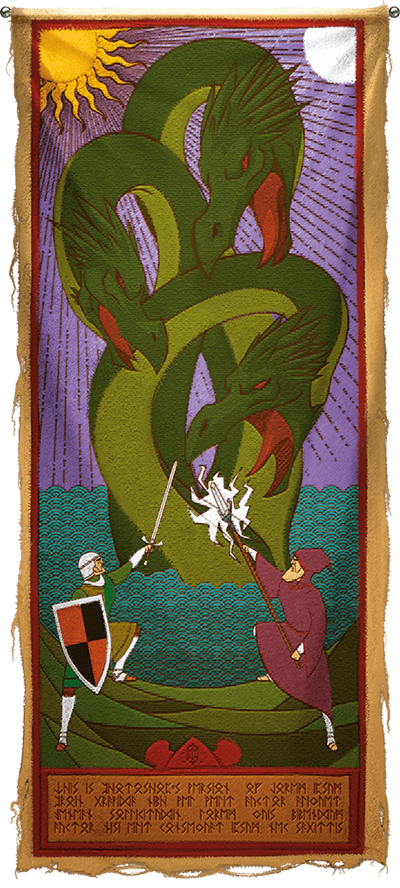 We’ve completed our second full rotation of the twelve classes in the Player’s Handbook, not to mention taken a deep dive into the first 5 levels of D&D’s thirteenth class, the inventive and arcane Artificer! This wave of the Class 101 series will appraise every subclass within the Player’s Handbook and break down each subclass’s strengths, weaknesses, thematic elements, and everything else a player would want to know before playing that subclass. Because of this, you will need to own the Player’s Handbook (or purchase the subclass a la carte on the Marketplace) in order to make full use of this series.
We’ve completed our second full rotation of the twelve classes in the Player’s Handbook, not to mention taken a deep dive into the first 5 levels of D&D’s thirteenth class, the inventive and arcane Artificer! This wave of the Class 101 series will appraise every subclass within the Player’s Handbook and break down each subclass’s strengths, weaknesses, thematic elements, and everything else a player would want to know before playing that subclass. Because of this, you will need to own the Player’s Handbook (or purchase the subclass a la carte on the Marketplace) in order to make full use of this series.
The fighter class is one of the most thematically versatile classes in Dungeons and Dragons. That is to say, while classes like paladin or warlock impose a certain level of roleplaying flavor on your character from the very beginning, a fighter is more or less a blank canvas for your own character’s story. When playing an Eldritch Knight, a type of fighter that uses weapons and destructive spells in conjunction, you’re free to determine how you gained your martial and magical skills, and what you want to achieve with them.
Check out the other guides in the Class 101 series, like the broad overview of the druid class in Fighter 101: A Beginner’s Guide to Heroic Combat, Fighter 101: Champion, and Fighter 101: Battle Master. If you’re interested in playing other classes, check out the entire Class 101 series.
Story of the Eldritch Knight
“What are you doing?” a young brother asked his sister. The sister, a fighter, knelt before a makeshift altar cobbled together by wooden boards atop two sawhorses, draped with a simple burlap cloth. A longsword rested on the altar. Her eyes were closed, and she was dressed in a simple tunic and breeches, her hair pulled into a bun. The suit of armor she had inherited from her father hung on a stand nearby. Her brow twitched with annoyance as her brother spoke.
“I’m meditating,” she grumbled. She let out a long breath and reached out into the aether once more with her consciousness, feeling for the strands of the Weave that were strung invisibly around her. She hovered her open hand over the hilt of sword, and felt new strands of magic forming between the wellspring of magic within her and the sword.
“Can I help?” her brother, bounding to her side, a huge grin on his face. “You meditating with that sword? You gonna do magic? Can I see? Can I see your magic?”
The sister scowled and growled through gritted teeth, “If you can sit still for ten minutes, yes.”
Miraculously, he was. He sat cross-legged next to his kneeling sister, alternating between gawking at the look of calm concentration on her face and the gently humming sword on the homemade dais before her. Ten tense minutes passed, and the fighter’s eyes snapped open. A flash of light glinted upon her irises, and then vanished just as quickly as it appeared. She stood and flexed her trembling hand.
“Okay,” she said to her brother, pointing to the sword. “Take it.”
“Really?” her brother gasped, eyes wide and shining with excitement.
“Yeah, really,” the fighter said, looking away. “Just watch the blade and don’t hurt yourself. Or, if you do hurt yourself, say you were playing in the forest. Mom’ll kill me otherwise.”
“Whoo hoo!” her brother whooped. He picked up the sword and swung it into the air over his head. He ran around the cellar room, slashing at invisible foes and imagining he was just like their father, killing monsters that threatened their village. His sister smiled at his excitement, then focused herself. She focused her eyes upon the hilt of the sword as her brother ran about and steadied her breathing. She tuned out all the distractions of the Material Plane and focused solely upon the strands of the Weave that bound her to the blade. She felt a surge of energy tingle from her chest down her arm, and at the moment the surge passed through her fingertips, the sword vanished from her brother’s hands.
Her brother yelped and looked around. “Ahhh! It’s gone!” he gasped. “I’m so sorry, it just—!” He turned to his sister and his jaw dropped open. Clutched in his sister’s right hand was her father’s sword. Her heart was pounding as she stared at the sword she had just magically conjured to her, but she managed to compose herself and look at her brother with a flicker of smugness.
“See?” she said. “Magic.”
Eldritch Knight Features
Eldritch Knight fighters memorize a number of destructive and protective spells during their training, in addition to other magical abilities that allow them to meld their martial and magical prowess. The fighter gains access to five subclass features at 3rd, 7th, 10th, 15th, and 18th level. You can read all of the Eldritch Knight features in the Player’s Handbook. In summary, your subclass features allow you to:
- You learn two cantrips from the wizard spell list
- You gain the ability to memorize and cast a number of abjuration and evocation spells from the wizard spell list
- You bond with your weapon, allowing you to summon it to your hand at any time
- You can make a weapon attack as a bonus action when you cast a cantrip
- Your weapon attacks make creatures less likely to succeed on saving throws against your spells
- You can teleport short distances when you use your Action Surge feature
- You can make a weapon attack as a bonus action when you cast a spell as an action
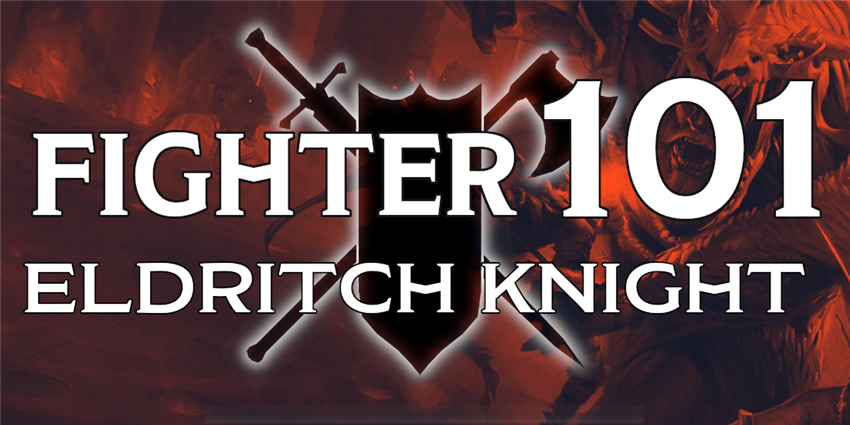
Benefits of the Eldritch Knight
There are a number of different options available for people who want to wield both spells and weapons—what does the Eldritch Knight bring to the table? The paladin offers a “jack of all trades” option by combining heavy armor and spiky damage through Divine Smite, the bardic College of Valor and clerical Light Domain provide spell-heavy options for moderately armored warriors, and the Bladesinger wizard tradition encourage lightly armored warriors to dance into battle, supported by their mighty spells.
Eldritch Knights curve in the opposite direction, using spells to complement their impressive suite of powerful defenses and overwhelming attacks. Typically, fighters can only focus on single targets with their attacks, and struggle against foes whose armor shrugs off these attacks. This encourages a very specific playstyle for Eldritch Knights: focus on spells that target multiple foes (or that effect an area), and find spells that force enemies to make a saving throw instead of requiring you to make an attack roll.
Your spells are situational tools, and the limited number of spell slots you get per day are a stark reminder of this. Don’t forget: you’re still a fighter first. Stay in the thick of combat, bashing helmets and tanking blows until your enemies have all clumped up around you, then let loose a well-timed burning hands to maximum effect. If you want to add a little more variety to your repertoire than evocation (offensive) or abjuration (defensive) spells can offer, you can add a spell from any school of magic to your list of Spells Known at 8th, 14th, and 20th level.
As you gain levels in this class, your class features will help make you more flexible. Generally, you’ll have to choose between making an attack and casting a spell on a given turn. Features like War Magic, Eldritch Strike, and Improved War Magic make this choice much less painful by letting you cast spells and make an attack in the same turn—and even giving you a benefit to doing so against the same foe.
Drawbacks of the Eldritch Knight
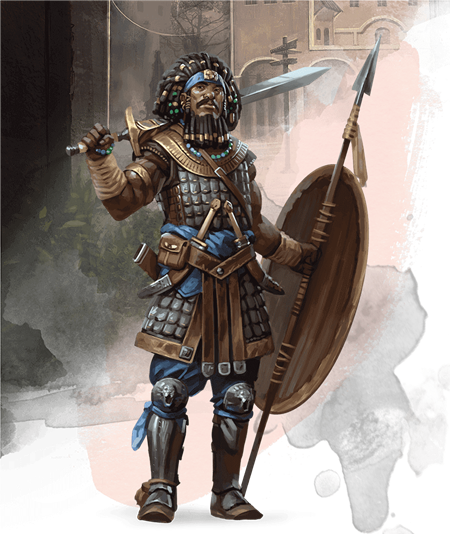 The biggest challenge of playing an Eldritch Knight is a conflict between casting spells and making attacks. These two styles of D&D combat mix like water and oil, and it’s difficult to meld them together in a way that evokes the fluid feelings of magically enhanced martial combat in popular fantasy series like Avatar: The Last Airbender or Star Wars. Casting a spell and making a weapon attack are two discrete actions; unless you’re using a purpose-made cantrip like green-flame blade, you can’t weave magic into a sword strike.
The biggest challenge of playing an Eldritch Knight is a conflict between casting spells and making attacks. These two styles of D&D combat mix like water and oil, and it’s difficult to meld them together in a way that evokes the fluid feelings of magically enhanced martial combat in popular fantasy series like Avatar: The Last Airbender or Star Wars. Casting a spell and making a weapon attack are two discrete actions; unless you’re using a purpose-made cantrip like green-flame blade, you can’t weave magic into a sword strike.
Spells that can be cast as a reaction or a bonus action, like misty step or shield, soften this issue somewhat, allowing you to make an attack and then repel your foes’ strikes with a shimmering barrier of force. Nevertheless, it can be frustrating to have to page through a list of abjuration or evocation spells with a casting time of 1 reaction or 1 bonus action to find what spells will support the character concept you have in your head.
At least that sort of research digitally is much easier than doing so with a print book, thanks to the D&D Beyond Spell tool—which, troublingly, reveal the limits of this restriction: there are only three 1-reaction-casting-time spells that fit those criteria, and no 1-bonus-action-casting-time spells. So, while the Eldritch Knight is a reasonably powerful class, the challenges of melding spellcasting and sword fighting into one fluid motion may frustrate you if you’re looking for a highly cinematic experience in your D&D game.
If you want to be able to cast spells and fight, but you’re playing a low-level one-shot or don’t think your campaign will advance past 6th level, you might be better off playing a Champion fighter and taking Magic Initiate (Wizard) feat, granting you two wizard cantrips and one 1st-level wizard spell that you can once per long rest. Your spellcasting will be much more limited than if you’d chosen to play an Eldritch Knight—at 5th level, an Eldritch Knight knows two cantrips but also knows 4 wizard spells and has three 1st-level spell slots with which to cast them. However, if giving your fighter a little bit of magical flavor is all you want, then Champion’s suite of simple, powerful combat-focused features might be more appealing.
Suggested Build
Like most classes in D&D, the fighter doesn’t choose their subclass until 3rd level. If you’re playing a fighter from 1st level and think you want to become an Eldritch Knight later, you should choose a race that improves your Strength (or Dexterity) score and also your Intelligence score. Strength affects how hard you hit with most melee weapons, whereas Dexterity makes you better with ranged or finesse weapons. Your Intelligence score affects how likely you are to hit with your spell attacks, and how high your spell save DC is, which makes it harder for foes to resist your spells. Because of this, your Strength or Dexterity score should be your highest ability score, and your Intelligence should be your second highest score.
You can play an Eldritch Knight as a heavily armored, greatsword-wielding tank, or as a lithe and nimble, rapier-wielding duelist. If you want to play the former, some good races include half-orc, dragonborn, rock gnome, and mountain dwarf. To play the latter, races like forest gnome and high elf will do the trick. Humans and half-elves are well-suited to just about any class, as well.
As usual, your character’s background is up to you. You can come up with all sorts of interesting stories and oddball characters by pairing unlikely backgrounds with the Eldritch Knight’s particular blend of sagely study and rough-edged athleticism. Were you a Sage who abandoned a rigorous regimen of “useless” magical study to practice destructive arts instead? Or were you a Noble whose tutors encouraged you to dabble in many different forms of martial artistry?
It’s a safe bet to choose EQUIPMENT when given the choice between GOLD or EQUIPMENT during character creation. The various types of equipment available to fighters easily suits either a Strength or Dexterity-focused playstyle. Choose chain mail and a martial weapon plus a shield if you want to focus on Strength, and choose leather armor, a longbow, and a rapier if you want to focus on Dexterity. Since you will gain class features that allow you to make weapon attacks as a bonus action when you cast a spell, you should focus on wielding a shield and a rapier if you want to be a Dexterity-based fighter, rather than dual wielding light weapons.
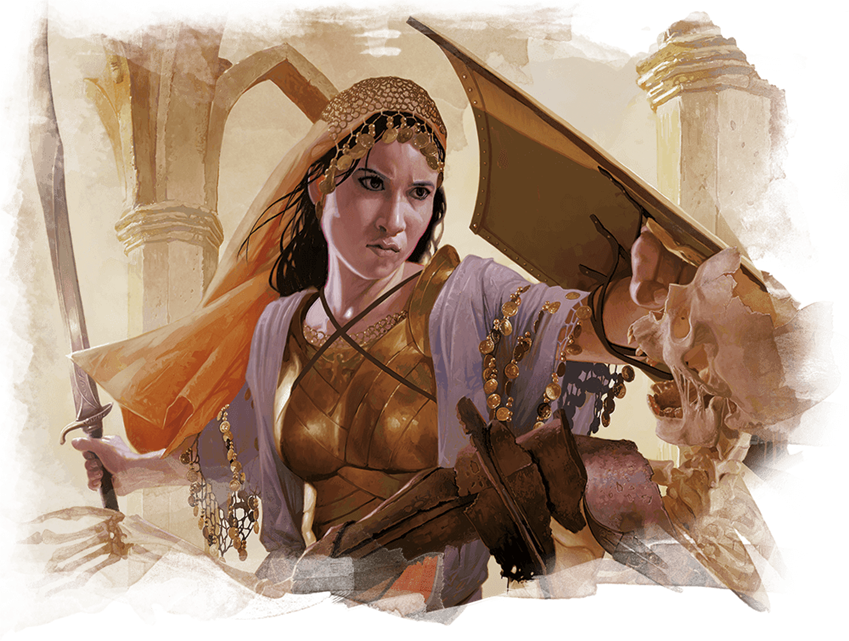
Spells
You gain the ability to cast spells when you choose this subclass at 3rd level. Your spell selection is quite limited—not only do you memorize spells instead of being able to prepare them at the start of a day, but you only have a scant two 1st-level spell slots to use. While this number increases as you level up, it encourages you to reserve your spells for big, flashy moments of destruction, or in desperate last-ditch efforts.
As a 3rd-level Eldritch Knight fighter, you know two cantrips from the wizard spell list. Since you’re likely to be in melee combat, it’s good to choose one offensive cantrip with a range of at least 60 feet to extend your reach. Your second cantrip should be either a utility cantrip to help round out your character’s skill set, or an offensive cantrip with a range of 5 feet, so that you don’t have to worry about having disadvantage when making a ranged attack while in close combat.
Also at 3rd-level, you know three spells: two 1st-level abjuration or evocation spells from the wizard spell list, and one 1st-level spell of any school from the wizard spell list. Choose these spells wisely; though you can trade out one spell you know for another when you gain a level in this class, these spells are otherwise permanent decisions. It’s wise to know at least one spell labeled OFFENSE and one labeled DEFENSE, and choose your third spell based on what you think your character would want to know. Note that this list only includes some spells from the Player's Handbook, so if you want to choose more unusual spells, or have other sources like Xanathar's Guide to Everything, you'll have to do a little self-directed research. This list is just here to get you started if this is your first time playing an Eldritch Knight.
- Alarm (SUPPORT)
- Burning hands (OFFENSE)
- Chromatic orb (OFFENSE) [be aware that you’ll have to purchase a diamond worth 50 gp in order to cast this powerful spell!]
- Magic missile (OFFENSE)
- Protection from evil and good (DEFENSE)
- Shield (DEFENSE)
- Thunderwave (OFFENSE)
Feats
As a fighter, you gain two more Ability Score Increases than any other class in the game. (The extras come at 6th and 14th level.) This means that it’s incredibly easy for you to take one or even two feats while still maxing out your vital ability scores!
Once you’ve improved your Strength or Dexterity score to 18 or 20, you can increase your power with a few useful feats. The following feats are good picks for Eldritch Knight fighters, and will improve your reliability in your own desired area of expertise:
Great Weapon Master. These days, it practically goes without saying that Great Weapon Master is one of the best feats in the game. Choosing this feat will send your damage output into the stratosphere, though only if you’re using a two-handed weapon.
Polearm Master. This feat synergizes well with War Caster and Sentinel, making it difficult for enemies to approach you or maneuver around you.
Sentinel. A must-have feat for any fighter interested in tanking for their party, Sentinel makes it hard for enemies to attack your allies, or for them to leave your reach once they’ve approached you.
Shield Master. A specialized but useful choice for Eldritch Knights who want to wield a shield rather than go for a two-handed weapon. An excellent choice for Dexterity-focused fighters wielding a rapier and a shield.
War Caster. Eldritch Knights, especially those who wield a one-handed weapon and a shield, can make use of every aspect of this feat. Making it easier to maintain concentration while taking damage is always a benefit, and not having to have a hand free to perform a spell’s somatic components is a huge boon when you can't afford to drop your shield or your rapier. Gaining the ability to make opportunity attacks with your spells is also excellent! Just imagine hurling a guaranteed-to-hit magic missile at a fleeing foe.
If you want more advice for building a fighter, check out Fighter 101. Have you ever played an Eldritch Knight fighter? What advice would you give to players that want to play this subclass? Next week, Class 101 will cover the monk's Way of Shadows archetype, an unseen ascetic who strikes from the shadows. What's your fighter character like? Let us know in the comments!
Create A Brand-New Adventurer Acquire New Powers and Adventures Browse All Your D&D Content
 James Haeck is the lead writer for D&D Beyond, the co-author of Waterdeep: Dragon Heist, Baldur's Gate: Descent into Avernus, and the Critical Role Explorer's Guide to Wildemount, a member of the Guild Adepts, and a freelance writer for Wizards of the Coast, the D&D Adventurers League, and other RPG companies. He lives in Seattle, Washington with his fiancée Hannah and their animal companions Mei and Marzipan. You can find him wasting time on Twitter at @jamesjhaeck.
James Haeck is the lead writer for D&D Beyond, the co-author of Waterdeep: Dragon Heist, Baldur's Gate: Descent into Avernus, and the Critical Role Explorer's Guide to Wildemount, a member of the Guild Adepts, and a freelance writer for Wizards of the Coast, the D&D Adventurers League, and other RPG companies. He lives in Seattle, Washington with his fiancée Hannah and their animal companions Mei and Marzipan. You can find him wasting time on Twitter at @jamesjhaeck.








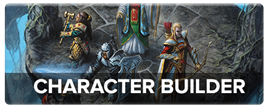
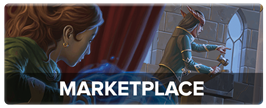
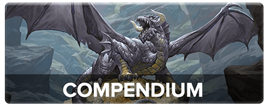
-
View User Profile
-
Send Message
Posted Sep 4, 2020first!
Why do you keep making me want to play these epic subclasses!
-
View User Profile
-
Send Message
Posted Sep 4, 2020One feat that works great for the Eldritch Knight that's not mentioned is the Crossbow Expert feat.
While 2 of the features go unused, "Being within 5 feet of a hostile creature doesn’t impose disadvantage on your ranged attack rolls" makes for great melee spellcasting.
-
View User Profile
-
Send Message
Posted Sep 4, 2020A well written article introducing the class to novice players, particularly this paragraph and those that follow it:
This is clearly the biggest letdown of the subclass, which your suggestions will help to minimize for players who aren't familiar with the game's intricacies. Also noted that you didn't touch on the mechanical conflicts created by the interplay between an 11+ level Fighter's Extra Attacks and the War Magic feature. Still, I can't help but wonder why on earth the game's designers didn't just add the various smite spells from the Paladin's spell list to those available for an Eldritch Knight. They're thematically perfect and work well mechanically due to their bonus action casting times. Plus they'd be pretty well balanced by the EK's limited spell slots, and someone would actually use them in the game (Paladins tend to forsake them for Divine Smites). Instead, EKs must be resigned to being defensive powerhouses with limited & routine offensive options (at least until they can finally get shadow blade).
-
View User Profile
-
Send Message
Posted Sep 4, 2020Very good James, though made an error by saying that they get three spells if abjuration and evocation. They get two that have to be, and one that can be any school. Very good, though some feats felt generic. Sentinel? Polearm master? I would maybe add some more unknown feats. Spell sniper, athlete etc. Hope this helped, love this series.
-
View User Profile
-
Send Message
Posted Sep 4, 2020I was wondering if combining a Wizard (or other spellcaster) and Fighter would actually be more effective. I don't know... I assume this is better since you get all the fighter class abilities rather than doing half and half.
-
View User Profile
-
Send Message
Posted Sep 4, 2020I am actually multiclassing fighter and wizard, and it seems to be pretty effective.
Although Im pretty sure any Aarakockra arcane archer necromancer would be pretty effective in any scenario.
-
View User Profile
-
Send Message
Posted Sep 4, 2020That seems to be very effective. You're really only weak when your in small cave with close range enemies, but then again, you're part fighter.
-
View User Profile
-
Send Message
Posted Sep 4, 2020Multiclassing Eldritch Knight with War Wizard is the closest you can get to a proper swordmage class sadly.
-
View User Profile
-
Send Message
Posted Sep 4, 2020Hold up, on your description for War Caster... you can't cast spell when wielding two-handed weapons? I was sure wielding two-handed weapons didn't impact your spellcasting in any way at all.
-
View User Profile
-
Send Message
Posted Sep 4, 2020A good feat that is not mentioned in this post is magic innate. Taking magic innate (cleric) for Shield of faith makes you increases Your ac by 2, and give s you a BA Spell thats availible at low levels if you take variant human. And in full plate, (18), a shield (20), shield of faith (22) and shield the wizard Spell, you Will have the fantastic ac of 27 at lvl 3. Note that this works best with full plate, but other heavy Armor works just fine.
sorry if Made any grammar mistakes
-
View User Profile
-
Send Message
Posted Sep 4, 2020hm.....
-
View User Profile
-
Send Message
Posted Sep 4, 2020Though I suspect only hardcore rules-as-written abiding DMs would strictly enforce this, you must have a free hand in order to perform a spell's somatic components. It makes sense to me that a fighter wielding a two-handed weapon could let go of their weapon for a few seconds to do so—though I could imagine someone wielding a shield and a one-handed weapon would have a harder time simply letting go of their gear for a moment.
-
View User Profile
-
Send Message
Posted Sep 4, 2020Direct from the PHB,
”Two-Handed. This weapon requires two hands when you attack with it. This property is relevant only when you attack with the weapon, not when you simply hold it.”
So technically you don’t need Warcaster for Two-handed weapons and just for sword and board.
-
View User Profile
-
Send Message
Posted Sep 4, 2020Great article on this sub-class; love Eldritch Knight. Heavy armour and shield plus Shield is just the classic way to annoy your DM.
Personally I'm a big fan of non-concentration control spells for the sub-class rather than going too heavy on damage spells. Not that there are a tonne of control options, but you can use them to setup a battlefield in your favour; the classic is Grease (though it feels more thematic for an Arcane Trickster), but Snare is one that you don't see many people take which I quite like, it lasts eight hours without concentration so it's a great way to trap somewhere you want to defend, the downside is it consumes 25 feet of rope, but rope is cheap and easy to get, plus a Strength fighter can carry loads of the stuff.
-
View User Profile
-
Send Message
Posted Sep 4, 2020Thank you dakingman for pointing this out! It’s my biggest gripe with the balance of the class as someone currently playing an EK. Also I wish that Steel Wind Strike would be a 4th level spell as I feel it would perfectly fit as a capstone spell for the EK.
I’m hopefully convincing my DM to have a Paladin teach me at least Searing Smite... once we save Helm Hold from whatever has taken it over in our campaign.
-
View User Profile
-
Send Message
Posted Sep 4, 2020I stand corrected! Thanks!
-
View User Profile
-
Send Message
Posted Sep 4, 2020The Eldritch Knight was the first character I played a full campaign with (we got up to level 11 or 12). I love the Eldritch Knight for what it is: a fighter that gains a few spells. In practice, I spent most of my spell slots on mirror image, shield, and absorb elements. I almost never used evocation spells. When the party already has a Sorcerer who can cast fireballs liberally, there's not much need for me to cast burning hands. My Eldritch Knight was a tank, and I used spells which made me a better tank.
I disagree with James that an Eldritch Knight should select spells which mitigate their weaknesses. I think an Eldritch Knight should select spells which improve their core strengths. My character-building philosophy, in general, is that players shouldn't be afraid of hyper-specialization. D&D is a group game. The best way to mitigate the Fighter's lack of AOE spells is to travel with a magic-user who can cast AOE spells. It's much better to have a balanced party than it is to have a party full of balanced characters. That's as true in D&D as it is in any party-based RPG.
-
View User Profile
-
Send Message
Posted Sep 4, 2020Shadow Blade would be excellent for eldritch knights, definitely worth one of the few non-abjuration/evocation slots.
-
View User Profile
-
Send Message
Posted Sep 4, 2020Yeah. To build a really satisfying arcane/warrior hybrid (especially one that's fun to play at all levels, and fits the narrative concept you have in mind) you almost have to "hack" the game. Paladins and Blade Warlocks have satisfying mechanics, but there's a lot of narrative baggage attached to them (why must a swordmage make a Pact or a Vow?) Valor Bards are unimpressive as swordmages until you get Magical Secrets and War Magic.
-
View User Profile
-
Send Message
Posted Sep 4, 2020Honest mistake. The second sentence wasn't in first printings of the book. :)